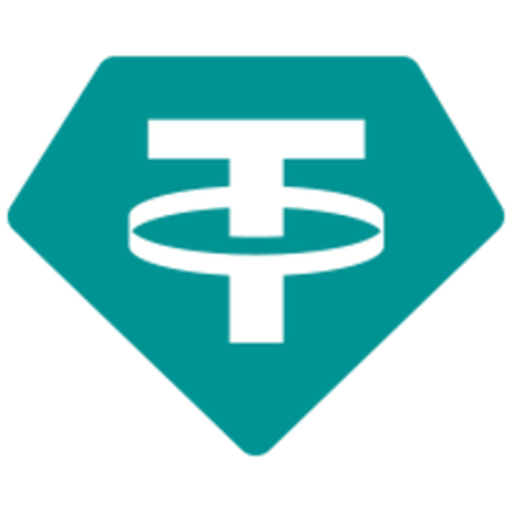Tether vs Gate – Price, Market Cap & Performance Compared
Which coin performs better – Tether or Gate?
We compare the current price (1 $ vs 16.43 $), market cap (173 087 463 220 vs 1 963 469 535) and all-time high (1.32 vs 25.94).
Find out which one stands out right now!
Tether is currently trading at 1 $, while Gate stands at 16.43 $. These cryptocurrencies differ not only in price but also in market presence.
The market cap of Tether is around 173 087 463 220, and Gate has about 1 963 469 535. Their respective all-time highs are 1.32 for Tether and 25.94 for Gate.
Daily trading volume and the 24h price change (-0.00189 % vs 1.02482 %) also offer key insights.
Compare all metrics now and see which coin fits your investment strategy best!
Tether
Tether is a widely-used stablecoin in the cryptocurrency market, designed to maintain a value equivalent to a traditional currency like the US dollar. It provides traders and investors with a stable asset to navigate the volatile crypto landscape, offering a flexible means to move funds quickly between exchanges. Despite its popularity, Tether has faced scrutiny regarding its reserve holdings and transparency, sparking ongoing debates within the financial community.
more informationGate
GateChain is an innovative blockchain platform that offers robust security features, particularly designed to address issues related to asset theft and private key loss. It introduces a revolutionary vault account system and on-chain recovery feature, setting it apart in the evolving crypto ecosystem. With its aim to enhance trust and reliability, GateChain is making significant strides in the quest for safer and more efficient blockchain solutions.
more information

|

|
|
|
|
General Information |
|
|---|---|
|
Title
Tether
|
Title
Gate
|
|
Symbol
usdt
|
Symbol
gt
|
|
Whitepaper
|
Whitepaper
-
|
|
Website
|
Website
|
|
Community
-
|
Community
-
|
|
Last Updated
2025-09-24 23:29
|
Last Updated
2025-09-24 23:29
|
Price Data |
|
|---|---|
|
Current Price $
1 $
|
Current Price $
16.43 $
|
|
High 24h
1 $
|
High 24h
16.54 $
|
|
Low 24h
1 $
|
Low 24h
16.17 $
|
|
Price Change 24h
-0.00002 $
|
Price Change 24h
0.16669 $
|
|
Price Change % 24h
-0.00189 %
|
Price Change % 24h
1.02482 %
|
Market Data |
|
|---|---|
|
Market Cap
173 087 463 220
|
Market Cap
1 963 469 535
|
|
Total Volume
95 616 120 249
|
Total Volume
48 628 265
|
|
Market Cap Change 24h
288 328 065
|
Market Cap Change 24h
17 937 573
|
|
Market Cap Change % 24h
0.16686 %
|
Market Cap Change % 24h
0.92199 %
|
|
Return on Investment (ROI)
-
|
Return on Investment (ROI)
-
|
Supply and Availability |
|
|---|---|
|
Circulating Supply
173 039 417 063
|
Circulating Supply
119 444 888
|
|
Total Supply
173 039 417 063
|
Total Supply
300 000 000
|
|
Max Supply
-
|
Max Supply
-
|
Historical Data |
|
|---|---|
|
All Time High (ATH)
1.32
|
All Time High (ATH)
25.94
|
|
ATH Change %
-24.39867 %
|
ATH Change %
-36.65360 %
|
|
ATH Date
2018-07-24 00:00
|
ATH Date
2025-01-25 03:07
|
|
All Time Low (ATL)
0.57252
|
All Time Low (ATL)
0.25754
|
|
ATL Change %
74.71457 %
|
ATL Change %
6 280.24235 %
|
|
ATL Date
2015-03-02 00:00
|
ATL Date
2020-03-13 02:18
|
Tether
Understanding Tether: A Stablecoin Powerhouse
Tether (USDT) is a leading name in the world of stablecoins, a class of cryptocurrency designed to facilitate transactions by maintaining a stable value. Unlike volatile cryptocurrencies like Bitcoin or Ethereum, stablecoins like Tether aim to provide users with the stability of fiat currency, while still leveraging the benefits of blockchain technology.
The Mechanism Behind Tether's Stability
Tether achieves its stability by pegging its value to traditional fiat currencies, primarily the U.S. Dollar. Each Tether token is reportedly backed by an equivalent amount of fiat currency held in reserve. This 1:1 backing mechanism is key to maintaining the coin's stable value, as reflected in its market price which typically hovers around 1 USD.
Historical Development and Milestones
Tether's inception dates back to 2014, and since then, it has played a pivotal role in demonstrating the practical use case of stablecoins within the crypto ecosystem. Its journey has seen significant milestones, including reaching its all-time high of $1.32 in July 2018, and experiencing its low at $0.572521 in March 2015. These deviations, while noteworthy, are rare occurrences in Tether's overall history, underscoring its primary objective of price stability.
Advantages of Using Tether
The primary advantage of Tether is its stability, making it a safe harbor for investors during times of high volatility in the broader cryptocurrency market. By offering price predictability, it facilitates more efficient trading, lending, and arbitrage, making it an indispensable tool for crypto exchanges and users alike. Moreover, Tether's utility is further enhanced by its widespread acceptance and high liquidity.
Challenges and Controversies
Despite its widespread use, Tether has faced scrutiny regarding its claims of full fiat backing. Critics have raised concerns about transparency, regulatory challenges, and the adequacy of its audited reserves. These issues have occasionally prompted regulatory attention and calls for greater transparency and accountability from Tether’s management.
Future Outlook for Tether
The future of Tether rests heavily on its ability to maintain trust and transparency with users and regulators alike. As the crypto market matures, Tether is expected to continue playing a significant role, particularly if it can navigate the evolving regulatory landscape successfully. Its position as a stablecoin market leader suggests that it will remain a cornerstone in crypto trading, offering a reliable alternative to more volatile assets.
In conclusion, Tether stands out as a critical tool within the cryptocurrency space, providing much-needed stability for traders and businesses. Its ongoing relevance will depend on its adaptability to regulatory demands and its continued assurance of transparency and full reserve backing to its user base.
Gate
The Rising Star: Understanding Gate Token's Journey
In the ever-evolving world of cryptocurrencies, Gate Token (symbol: GT) has made a notable mark. Despite the inherent volatility of the market, GT has carved out a space for itself among enthusiasts and investors alike. But what makes this token unique, and how has it performed over the years?
A Glimpse into Gate Token's Past
Gate Token was launched as the native utility token of the Gate.io exchange, one of the prominent digital asset exchanges. Its inception was marked by a turbulent market landscape, yet GT managed to ascend from its all-time low of $0.25754 on March 13, 2020, to reach a pinnacle of $12.94 on May 12, 2021. This remarkable growth of over 3328% from its lowest point highlights the token's potential and investor confidence within a short span.
Current Dynamics of GT
As of the latest data, the current price of Gate Token is $8.82, showing a 1.35% increase over the past 24 hours. The market cap stands robustly at approximately $1.13 billion, with a circulating supply of 128 million GT tokens. While the token is experiencing a recovery phase, being down about 31.78% from its all-time high, the current trend signals resilience and recovery.
Advantages of Holding Gate Token
Gate Token offers a multitude of benefits, primarily for users of the Gate.io platform. Token holders receive discounts on trading fees, participate in exclusive token offerings, and have the opportunity to engage in governance decisions related to the exchange’s future developments. These features foster a sense of community and incentivize engagement within the platform.
Challenges and Considerations
Like many cryptocurrencies, Gate Token is not immune to market volatility. Fluctuations in value can be frequent and drastic, posing a risk to investors seeking stability. Additionally, as a utility token primarily tied to the Gate.io exchange, its value and demand are intrinsically linked to the platform's success and adoption rate.
Future Outlook
Looking ahead, the trajectory of Gate Token will heavily depend on the broader adoption of cryptocurrencies and the continued innovation and expansion of the Gate.io platform. If the platform continues to attract and engage a more extensive user base, GT might benefit from increased utility and value. However, as with any cryptocurrency investment, potential investors should exercise due diligence and stay informed of market trends and developments.
Despite the challenges, Gate Token remains a promising project with a vibrant community backing and strong use-case potential. It's a prime example of how strategic utility and community engagement can propel a token's growth and adoption.

